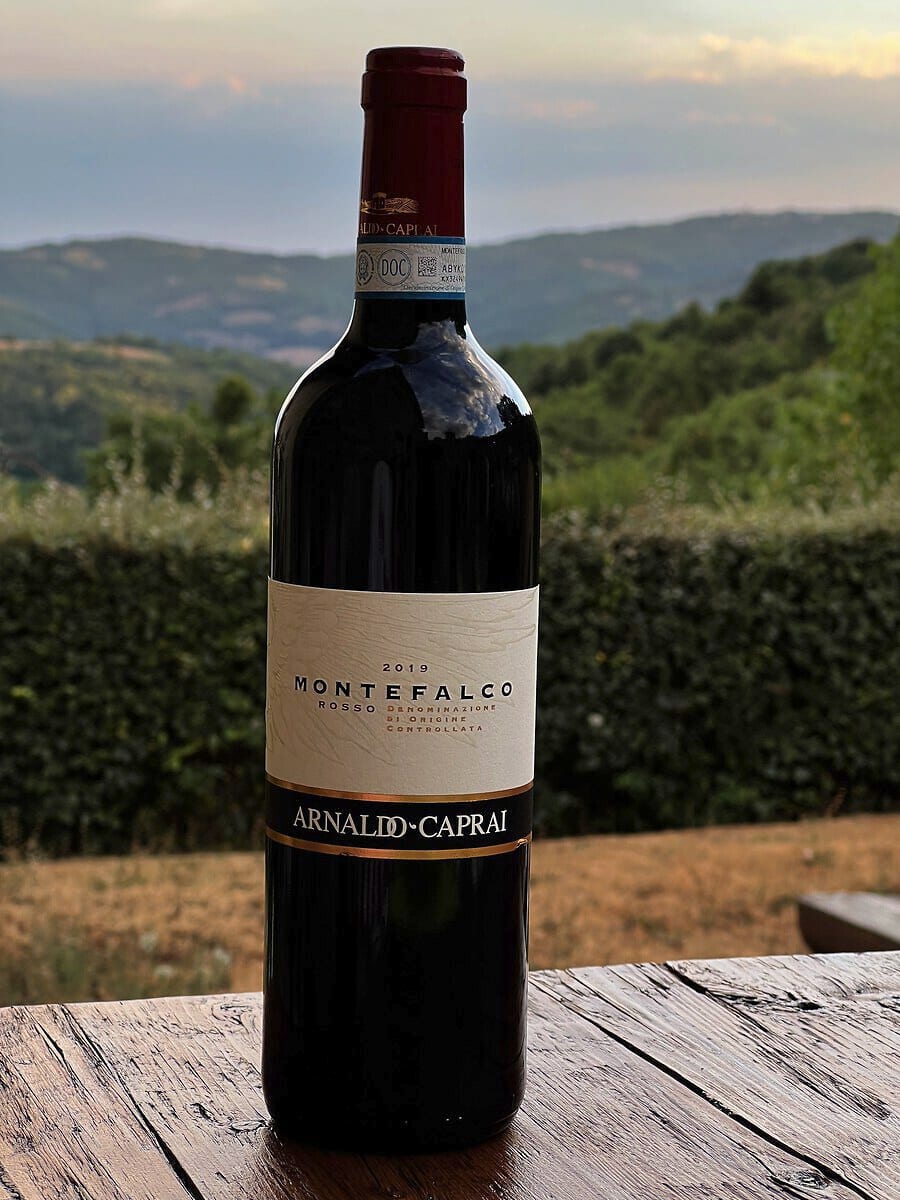Arnaldo Caprai "Montefalco Rosso Doc" 2019
Blend of Sangiovese / Sagrantino / MerlotEvolved. Leather & vanilla.
Tasting Notes
Montefalco Rosso Doc from Arnaldo Caprai has a beautiful ruby colour with an orange rim.
On the nose it is rather evolved for its age with leather, mushroom and wet forest floor notes. But it also has a round vanilla note and a juicy side with ripe plum.
On the mouth it’s warm and grippy with well integrated tannins. On the palate it shows notes of vanilla and spices.
The finish is rather long and pleasant.

|
|
Arnaldo Caprai |
|
|
Montefalco Rosso Doc |
|
|
Red & Still |
|
|
Italy |
|
|
Umbria |
|
|
Sangiovese, Sagrantino, Merlot |
|
|
2019 |
|
|
Learn more
Sangiovese
Wine making grape
Sangiovese is a red Italian wine grape variety named after the Latin sanguis Jovis, which means “Jupiter’s blood.” Though it is native to most of central Italy, from Romagna to Lazio, Campania, and Sicily, it is best known outside of Italy as the sole component of Brunello di Montalcino and Rosso di Montalcino, as well as the primary component of the blends Chianti, Carmignano, Vino Nobile di Montepulciano, and Morellino di Scansano, though it can also be used to make varietal wines like Sangiovese di Romagna
Link to here... | Derived from 'Sangiovese' on WikipediaSagrantino
Varietal
Sagrantino is an Italian grape variety native to the Central Italian region of Umbria. It is primarily grown in the Montefalco village and surrounding region, with a recent rapid increase in planting area dedicated to the grape from 351 hectares in 2000 to 994 hectares in 2010, in the hands of about 50 farmers.
Link to here... | Derived from 'Sagrantino' on WikipediaMerlot
Dark blue-colored variety of wine-making grape
Merlot is a dark blue–colored wine grape variety that can be used to produce both blending and varietal wines. Merlot is thought to be a diminutive of merle, the French word for a blackbird, which is most likely a reference to the grape’s color. Merlot is a common grape for blending with the sterner, later-ripening Cabernet Sauvignon, which appears to be higher in tannin, due to its softness and “fleshiness” combined with its earlier ripening.
Link to here... | Derived from 'Merlot' on Wikipedia
